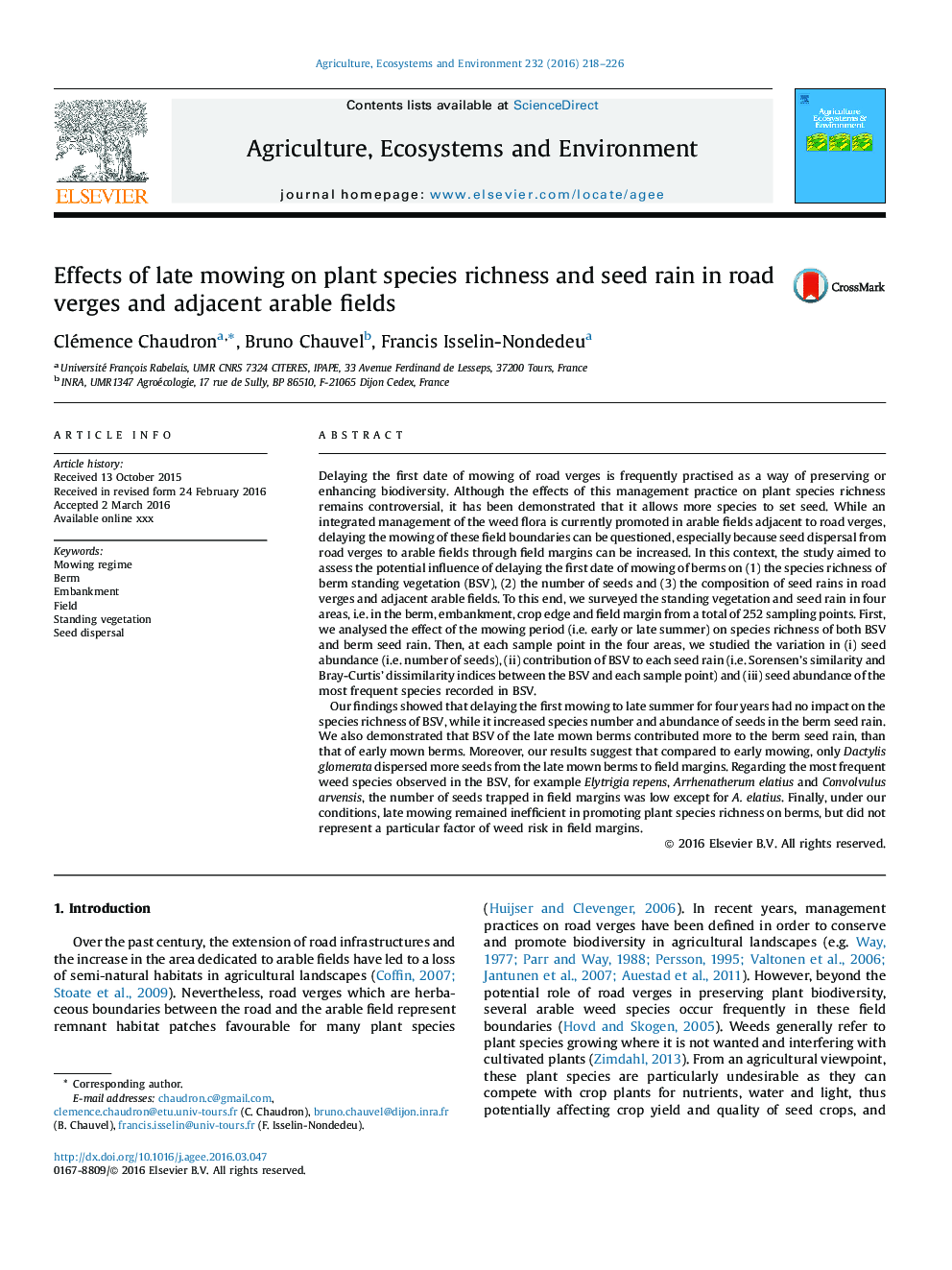| Article ID | Journal | Published Year | Pages | File Type |
|---|---|---|---|---|
| 8487320 | Agriculture, Ecosystems & Environment | 2016 | 9 Pages |
Abstract
Our findings showed that delaying the first mowing to late summer for four years had no impact on the species richness of BSV, while it increased species number and abundance of seeds in the berm seed rain. We also demonstrated that BSV of the late mown berms contributed more to the berm seed rain, than that of early mown berms. Moreover, our results suggest that compared to early mowing, only Dactylis glomerata dispersed more seeds from the late mown berms to field margins. Regarding the most frequent weed species observed in the BSV, for example Elytrigia repens, Arrhenatherum elatius and Convolvulus arvensis, the number of seeds trapped in field margins was low except for A. elatius. Finally, under our conditions, late mowing remained inefficient in promoting plant species richness on berms, but did not represent a particular factor of weed risk in field margins.
Related Topics
Life Sciences
Agricultural and Biological Sciences
Agronomy and Crop Science
Authors
Clémence Chaudron, Bruno Chauvel, Francis Isselin-Nondedeu,
